Peach Panther is a modern, fruit-forward cultivar bred to meet the current market’s appetite for loud, dessert-style aromatics with high potency. The most widely referenced cut traces back to Purple City Genetics (PCG), who paired Peaches with Papaya Bomb to assemble a peach–tropical profile wrapped in thick resin. In late 2023, Leafly’s “13 best cannabis strains of harvest 2023” specifically highlighted Farmer and the Felon’s Peach Panther made from PCG stock, signaling strong craft-market validation. That shout-out coincided with a wave of small-batch drops, and the strain quickly became a connoisseur talking point for its syrupy fruit character and sticky trichome coverage.
The timing of Peach Panther’s momentum lines up with a broader flavor shift visible across US adult-use markets, where shoppers increasingly prefer fruit, candy, and gelato-adjacent profiles over classic gas. In California, category data from dispensary shelves shows fruit-forward hybrids expanding share year-over-year, while pure “OG gas” slots shrink in some stores. Peach Panther rides that crest with a profile designed to perform in jars, on the nose, and in vaporizers. Its name telegraphs a dichotomy—soft peach sweetness and a stealthy, stalking potency that “pounces” after a few pulls.
Purple City Genetics is known for leveraging elite clone-only mothers and modern pollen donors to make terpene-forward crosses optimized for solventless extraction and flower quality. Peach Panther fits that strategy, blending a stone-fruit mother line (Peaches) with the tropical skunk funk of Papaya Bomb. Breeding priorities appear to include dense calyx stacking, high resin output, and a balanced hybrid structure suitable for both indoor and light-dep production. Those choices show up in how reliably the strain washes for hash and returns flavorful rosin from competent operators.
Media recognition continued into 2024 as flavor-centric flowers dominated 4/20 lists and editorial picks. Leafly’s “America’s best weed strains of 420 ’24” included an illustrative note about highly flavorful buds clocking 1.71% total terpenes from a no-till grow—an example that mirrors what many craft batches achieve. While not tied exclusively to Peach Panther, that 1.71% figure is a realistic benchmark for carefully cured, living-soil flowers in this category. Many Peach Panther lots cluster in the 1.5–3.0% terpene range when grown and dried optimally, keeping it competitive in a market where top-shelf jars often land between 1.0% and 3.5% total terpenes.
Expect to see Peach Panther appear in limited runs and collaborative releases rather than industrial-scale monocrops. The cultivar’s value proposition is tied to flavor, resin, and presentation—elements that small-batch, pheno-selected grows tend to emphasize over raw tonnage. That’s consistent with the Leafly harvest 2023 insight—“expect to see a lot of small batches”—which accurately forecasts its craft-market footprint. The result is a strain that travels through culture via connoisseur circles, solventless menus, and boutique dispensaries that curate seasonal drops.
Genetic Lineage and Chemotype Expectations
The core Peach Panther lineage is Peaches x Papaya Bomb, credited to Purple City Genetics. Peaches generally contributes a stone-fruit aromatic frame—peach, nectarine, and apricot tones—with creamy, floral lift. Papaya Bomb brings tropical skunk funk, ripe guava, and enzymatic “ferment” hints paired with dense resin heads. Together they form a chemotype that often centers on myrcene, limonene, and beta-caryophyllene, with supporting linalool or ocimene depending on pheno.
From a morphological standpoint, Papaya-based lines are known to produce sticky, hash-friendly resin with bulbous trichome heads, a trait solventless makers love. Peaches-leaning phenotypes can soften the funk, rounding it into candy-like nectar underpinned by floral and creamy undertones. Growers commonly report a hybrid structure with medium internodal spacing and strong lateral branching that responds well to topping. Calyx-to-leaf ratio tends to be favorable, which improves trimming efficiency and visual appeal.
Chemotype variability typically falls within tight, modern-hybrid bounds: THC-dominant with minimal CBD, minor CBG, and trace CBC. Papaya-derived lines have historically shown vigorous terpene production when dialed in, and some phenos push aromatic intensity even in modest terp totals. When cured correctly, the bouquet can feel amplified relative to the lab number, reminding buyers that 1.5% terpenes with the right ratios can outperform a flat 3% dominated by a single terpene. That “ratio over raw count” pattern is common among dessert cultivars.
Because Peach Panther is still newer than classic staples, consumers may encounter name drift or regional cuts with slightly different behavior. Serious buyers should verify provenance and ask for batch-specific certificates of analysis (COAs) whenever possible. For growers, early pheno hunting and batch journaling help lock in the target profile before scaling. Over time, the community converges on a few consensus keepers that carry the banner.
Appearance: Bud Structure, Color, and Trichomes
Peach Panther presents with dense, medium-sized buds that often lean conical to spear-shaped after a clean hand-trim. A healthy calyx stack forms a tight lattice that catches light on every turn, with sugar leaves tucked in close. Mature flowers can exhibit a lime-to-forest green base, occasionally accented by blushes of apricot or faint lavender during cooler finishes. Orange to peach-pistil threads lay across the surface, contributing to the cultivar’s namesake vibe from across the jar.
Trichome coverage is a calling card. Expect thick blankets of glassy resin that frost the bud surface and line the inner calyces, producing a silvery sheen under LED shop lights. Under a loupe, heads trend toward medium to large with good cap integrity, an indicator of strong solventless wash potential. Experienced hash makers often cite head size and stickiness as practical markers when scouting live material.
When broken apart, the interior reveals saturated greens and occasional anthocyanin flashes in colder late-flower rooms. The fracture line of a well-cured nug will show resin stringing lightly between pieces, a visual cue for high oil content. Properly executed packs maintain slight spring and density, avoiding overdry “cornflake” texture. Display-wise, Peach Panther checks all the connoisseur boxes—color contrast, frosting, and a manicured silhouette that photographs well.
Bag appeal extends to uniformity. Dialed-in batches show consistent nug sizing and minimal popcorn, a sign of thorough canopy work and defoliation discipline. Retail buyers notice when jars pour out evenly shaped colas rather than a lumpy mix, and Peach Panther’s structure makes that achievable. That consistency helps it compete on crowded top-shelf walls where appearance alone can sway a purchase.
Aroma and Bag Appeal
Open a fresh jar of Peach Panther and the room tilts toward ripe stone fruit layered over tropical sherbet. The top note recalls white peach puree or peach ring candy, depending on pheno and cure tempo. Beneath that sits a ripe papaya and guava thread with a gently funky edge, plus a vanilla-cream softness that smooths the transition between notes. Some batches carry a floral lift reminiscent of jasmine or orange blossom on the exhale.
Myrcene-forward phenos present the peach nectar more as a juicy, sun-warmed pulp, while limonene-tilted expressions read brighter and zestier. Beta-caryophyllene contributes the peppery spine that keeps the sweetness from becoming cloying. A supporting linalool wisp can add a lavender hush that’s noticeable in a closed-room aroma test after grinding. Ocimene, when present, adds sprightly, green-fruit sparkle that helps the bouquet leap from the grinder.
Cure quality dramatically impacts the profile. Slow-dried, cool-cured flowers retain delicate volatiles that punch above their percentage in the lab report. Batches that hit a 10–14 day dry at 58–62% RH tend to deliver the cleanest stone-fruit saturation without hay or chlorophyll edges. That’s one reason living-soil, no-till growers often shine with this cultivar—the soil microbiome and measured dry/cure elevate nuance.
Terp intensity aligns with the modern craft benchmark. Leafly’s 2024 4/20 coverage showcased a no-till batch with 1.71% total terpenes, a realistic floor for well-grown fruit-centric flower. Peach Panther routinely lands in that 1.5–3.0% band when handled attentively, though the exact aromatic “loudness” depends on the terpene ratios rather than the raw total. In-store, the jar test often produces immediate, sweet-forward interest followed by repeat huffs to catch the papaya funk underneath.
Flavor and Consumption Experience
On dry pull, expect peaches-and-cream with tropical taffy and a finish of soft pepper. Combustion brings a sweet, velvety inhale that tastes like a split peach with a spoon of vanilla gelato, then a warm exhale with gentle spice and faint guava. Vaporization on clean glass or a low-temp rig further clarifies the stone fruit, revealing floral hints that combustion can obscure. Rosin from Peach Panther frequently amplifies mango-papaya tones alongside the peach core, producing a layered fruit salad effect.
Temperature management matters. At lower vape temps (170–185°C), peach candy and blossom dominate, and the mouthfeel is silky with minimal throat bite. Step up to 190–200°C and the papaya funk and caryophyllene pepper gain prominence, delivering a satisfying, dessert-to-spice progression. Overheating, however, flattens the sweetness and emphasizes bitterness, so flavor chasers should keep temps in check.
The aftertaste lingers pleasantly for several minutes, especially on glass or clean ceramic. A well-cured joint carries a syrupy finish that pairs unusually well with sparkling water or citrus seltzer. Pairings that contrast, like espresso or dark chocolate, pull forward the pepper-spice backbone. Terp chasers sometimes compare its finish to peach oolong tea with a tropical twist, a metaphor that fits surprisingly well.
Edibles or live-resin carts derived from Peach Panther vary widely by producer, but the best examples maintain the orchard-meets-tropics motif. In solventless cartridges, bright stone-fruit often arrives first, with papaya, banana peel, and guava appearing after two or three pulls. The net effect is a crowd-pleasing, confectionary profile that stays interesting across a session. It’s a flavorful ride that justifies the cultivar’s name and marketing promise.
Cannabinoid Profile and Potency Metrics
Peach Panther is THC-dominant, with most verified batches falling between 20% and 28% total THC by weight. Exceptional phenotypes may tick above 28% in lab results, but potency outliers are less important than terpene synergy for overall satisfaction. CBD generally stays below 1%, making the cultivar a poor choice for those seeking CBD-rich effects without intoxication. Minor cannabinoids commonly include CBG in the 0.1–1.0% range and CBC around 0.1–0.5%, though these vary by cut and cultivation.
In practical terms, users report a strong-to-very-strong psychoactive effect consistent with modern dessert cultivars. A single, slow joint can comfortably serve two to three regular consumers, while novice users should start with 1–2 modest inhalations. Onset for inhaled use is typically 2–10 minutes, with peak effects around the 30–45 minute mark. Duration commonly spans 2–3 hours, extending to 4 hours for sensitive individuals.
Lab variability underscores the importance of COAs. Even within one harvest, different rooms or light spectrums can swing terp and cannabinoid totals by several percentage points. Consumers should check date of test, lab accreditation, and full-panel screening for residual solvents and microbials when available. Retailers can improve trust by posting QR codes on jars—an educational practice that outlets and growers increasingly adopt.
Market context helps frame the numbers. In many legal states, average retail flower THC hovers around the high teens to low 20s, with top-shelf categories typically starting at 20%+. Against that backdrop, Peach Panther’s 20–28% lane positions it as a legitimate heavyweight. Still, it’s the terp synergy—not just THC—that explains why connoisseurs chase this jar over purely high-THC but flat-tasting options.
Terpene Profile and Volatile Chemistry
The dominant terpene suite in Peach Panther typically centers on myrcene, limonene, and beta-caryophyllene, with linalool, ocimene, and humulene often contributing. Myrcene, commonly the most abundant terpene in US retail flower, adds the juicy, ripe fruit impression and soft body feel. Limonene brightens the top note, contributing citrus-zest lift that many perceive as mood elevating. Beta-caryophyllene supplies a pepper-spice backbone and is unique among common cannabis terpenes for directly agonizing CB2 receptors.
Real-world totals for Peach Panther commonly register 1.5–3.0% total terpenes when grown and cured with care. Leafly’s 2024 coverage cited a 1.71% total terpene result on highly flavorful, no-till flower, consistent with craft-level outcomes. Importantly, flavor expressiveness is not linear with totals—1.8% with balanced ratios can taste louder than 3.0% dominated by a single terpene. The cultivar’s appeal lies in its harmonious blend where stone fruit meets tropical funk without either note overpowering.
Secondary terpenes help fine-tune the signature. Linalool can add a floral, lavender nuance that some describe as “peach blossom,” especially noticeable at low vape temps. Ocimene contributes green-fruit and floral tones and is volatile enough to reward careful drying at cooler temperatures. Humulene introduces a subtle woody-bitter edge that keeps the sweetness in check and complements caryophyllene’s pepper.
Beyond terpenes, other volatiles shape the peach-tropical illusion. Esters and lactones—while present in smaller amounts and less consistently quantified in cannabis COAs—are plausible contributors to the nectar-like aroma when growers nail the dry and cure. Volatile sulfur compounds (VSCs), the molecules responsible for “gassy” notes in some cultivars, are generally lower in Peach Panther, letting fruit dominate. The net result is a crowd-pleasing, layered aromatic that validates why fruit-and-candy profiles keep winning shelf space.
Experiential Effects and Functional Use Cases
Peach Panther’s effects are hybrid-balanced, typically starting with a fast, cheerful lift before settling into a smooth, body-calming plateau. Many users describe a mood-brightening onset that softens stress perception and invites conversation. The mid-phase often marries creative focus with a comfortable, floating body buzz that pairs well with music, cooking, or light socializing. At higher doses, the cultivar can tip into couch-friendly relaxation with classic Papaya heaviness.
Functionally, Peach Panther fits late afternoon and evening slots for most consumers. It can be a “happy hour” strain—festive enough to enhance a gathering without immediately flattening energy. For solo use, it plays well with creative work that benefits from sensory detail: curating playlists, sketching, or experimenting in the kitchen. Outdoor strolls at golden hour are a popular pairing, as the warm body tone and peachy aroma complement gentle movement.
Side effect profiles are typical of high-THC, terpene-rich flower. Dry mouth and dry eyes are common, and fast consumption can induce raciness in those sensitive to limonene-forward profiles. Newer users should follow low-and-slow dosing, spacing puffs by 10–15 minutes to assess the build. Staying hydrated and having a light snack nearby enhances comfort and can extend the pleasant phase of the experience.
In social contexts, the strain’s candy-like flavor lowers barriers for cannabis-curious adults. That accessibility, however, should not mask its potency—20–28% THC can be overwhelming if misjudged. Experienced hosts often pre-roll smaller, half-gram joints or load 0.05–0.1 g bowl packs to keep sessions paced. Thoughtful dosing preserves the cultivar’s musicality and conversation-friendly glow.
Potential Medical Applications and Safety Considerations
While not a substitute for medical advice, Peach Panther’s chemotype suggests potential utility for certain symptom clusters. The bright mood lift some users report aligns with anecdotal use for stress and low mood at modest doses. The body-calming mid-phase and beta-caryophyllene’s CB2 activity may support minor pain and inflammation relief, especially when combined with heat, stretching, or rest. Papaya-lineage heaviness at higher doses may also help some individuals with sleep initiation.
Beta-caryophyllene is notable for being a dietary cannabinoid that agonizes CB2 receptors, with published binding affinities in the low hundreds of nanomolar. That mechanism may underpin anti-inflammatory effects seen in preclinical models, though translating those findings to smoked or vaped flower remains complex. Limonene has been studied for anxiolytic and mood-elevating properties in animal and limited human contexts, which could contribute to the strain’s reported outlook boost. Myrcene is commonly associated with muscle relaxation and sedation, particularly at higher exposure.
On the caution side, high-THC strains can exacerbate anxiety or transient tachycardia in sensitive individuals, particularly if consumed rapidly. Those with a history of THC-induced anxiety should prioritize vaporization at low temperatures, microdosing strategies, or formulations balanced with CBD. Because CBD is scarce in Peach Panther, adding a separate CBD source can soften edges for some users. Always consult a clinician about cannabis use if you take prescription medications or have underlying conditions.
Patients and caregivers should rely on batch-specific COAs to verify cannabinoid and terpene content, as well as contaminant testing. Look for heavy metal and microbial screens, particularly if immunocompromised. If inhalation is not appropriate, consider legally produced tinctures, edibles, or topicals derived from the same cultivar when available. Responsible sourcing and dosing are key to maximizing benefit and minimizing risk.
Comprehensive Cultivation Guide (For Legal Growers)
Important note: Cultivate cannabis only where it is legal to do so and in full compliance with local laws and licensing. The following is general horticultural information intended for lawful cultivation by adults or licensed operators. Always follow regulations on plant counts, canopy size, and testing, and prioritize safety and environmental stewardship.
Sourcing genetics and planning: Peach Panther circulates primarily as clone cuts in markets where Purple City Genetics or partner nurseries operate, though seed releases may appear intermittently. If seeds are available, decide between feminized and regular; outlets like CannaConnection publish general guides comparing feminized vs. regular seeds that can inform your choice. Many commercial growers prefer feminized seeds or verified clones to reduce the risk of male plants and streamline canopy planning. Regardless of source, quarantine new cuts and inspect for pests before introducing to your main room.
Growth habit and training: Expect a vigorous hybrid with medium internodal spacing and responsive lateral branching. Topping once or twice in veg encourages a broad, even canopy that maximizes light capture. Peach Panther tolerates low-stress training (LST) and scrog well, helping maintain a uniform top net of colas. Defoliation should be strategic—thin fan leaves that block airflow and light to inner sites, but avoid over-stripping that can stress fruit-heavy phenos.
Environment: In vegetative growth, target a temperate environment with stable airflow. Many growers succeed in the 24–28°C (75–82°F) range with relative humidity around 55–65%, tapering humidity as plants mature. In flower, aim for 20–26°C (68–78°F) with VPD rising gradually toward late flower to reduce mold risk in dense colas. Good air exchange, horizontal airflow, and clean filtration are critical, as Peach Panther’s resinous flowers can invite botrytis if rooms run warm and humid late cycle.
Flowering time and stretch: Most cuts finish in approximately 8–9 weeks of 12/12 light, with some phenos happy around day 60–63 and others wanting 65–70 for full expression. Expect moderate stretch during the first 2–3 weeks of flower, often 1.5x–2x depending on veg size and spectrum. Plan your trellising accordingly to prevent leaning or microclimates inside large colas. Watching trichome development with a loupe will give the most reliable harvest window—cloudy with 5–15% amber is a common sweet spot for a euphoric yet relaxed effect.
Nutrition and medium: Peach Panther is typically a moderate feeder that rewards steady, balanced nutrition rather than aggressive force-feeding. In living soil or no-till beds, focus on building a diverse soil food web with quality compost, proper aeration, and mineral balance. Top-dressing at key stages and maintaining consistent moisture supports terpene development and resin density. In inert media, avoid large swings—keep inputs consistent and observe leaf color and posture as your primary dashboard.
Irrigation and root health: Regardless of medium, uniform wet–dry cycles promote root vigor and canopy stability. Overwatering suppresses oxygen at the root zone and can mute aroma; underwatering stresses plants and reduces yield. Automated drip in coco or careful hand-watering in soil are both viable, so long as runoff and salt accumulation are managed. Root-zone temperatures around 18–22°C (65–72°F) help sustain microbial health and nutrient uptake.
Lighting and spectrum: Modern full-spectrum LEDs excel with Peach Panther, promoting tight internodes and rich terpene production when paired with good environmental control. Balanced red/blue ratios during flower encourage dense stacking without sacrificing color or volatility. DLI should be scaled to plant maturity and CO2 availability, with attention to leaf temperature rather than air temperature alone. Watch for photobleaching at the tops—raise fixtures or reduce intensity to prevent terpene loss late in flower.
Integrated pest management (IPM): Establish a preventive program rather than reacting to outbreaks. Regular scouting, sanitation, and environmental discipline are foundational. Beneficial insects can be deployed proactively, and horticultural oils or sulfur are options early in veg—avoid late flower applications that can compromise flavor or safety. Always adhere to legal compliance lists for allowed inputs and keep records for audits where required.
Harvest, dry, and cure: Terp-forward cultivars like Peach Panther live or die by post-harvest handling. Wet-trim or hang whole-plant depending on your space and target mouthfeel; whole-plant hangs can slow the dry and preserve delicacy. Aim for a 10–14 day dry around 60°F/60% RH until stems snap rather than bend, then jar at 58–62% RH for a 2–4 week cure. Properly cured Peach Panther presents maximal peach-papaya expression and a smooth, creamy smoke.
Yield and quality expectations: In optimized indoor conditions, skilled growers may achieve robust yields while preserving resin quality, though Peach Panther is often grown with flavor-first priorities. Solventless makers value this cultivar for its trichome head size and stickiness, with competitive wash returns when material is fresh-frozen promptly after chop. On the flower side, the goal is uniform, dense colas with intact trichome heads that glisten under light. Flavor intensity and smoothness will determine market performance more than raw grams alone.
Living soil and no-till notes: The craft scene’s success with no-till living beds is relevant here. The 1.71% total terpene example highlighted in Leafly’s 4/20 2024 editorial was grown in a no-till system, reflecting how rich soil ecology can translate to expressive aromatics. Many growers report that living soil batches of Peach Panther carry a fuller stone-fruit register and a softer finish compared with purely synthetic programs. While any method can produce excellence, soil-first approaches align well with this cultivar’s dessert profile.
Compliance and testing: Where required, schedule full-panel COAs to confirm cannabinoid and terpene content and screen for contaminants. Use those data to tune harvest timing and dry/cure protocols across successive runs. Transparent labeling—QR codes, harvest date, and test summaries—supports consumer education and trust. As the market matures, such documentation differentiates true craft from mere branding.
Peach Panther is a modern, fruit-forward cultivar bred to meet the current market’s appetite for loud, dessert-style aromatics with high potency. The most widely referenced cut traces back to Purple City Genetics (PCG), who paired Peaches with Papaya Bomb to assemble a peach–tropical profile wrap...
Origins and Breeding History
Peach Panther is a modern, fruit-forward cultivar bred to meet the current market’s appetite for loud, dessert-style aromatics with high potency. The most widely referenced cut traces back to Purple City Genetics (PCG), who paired Peaches with Papaya Bomb to assemble a peach–tropical profile wrapped in thick resin. In late 2023, Leafly’s “13 best cannabis strains of harvest 2023” specifically highlighted Farmer and the Felon’s Peach Panther made from PCG stock, signaling strong craft-market validation. That shout-out coincided with a wave of small-batch drops, and the strain quickly became a connoisseur talking point for its syrupy fruit character and sticky trichome coverage.
The timing of Peach Panther’s momentum lines up with a broader flavor shift visible across US adult-use markets, where shoppers increasingly prefer fruit, candy, and gelato-adjacent profiles over classic gas. In California, category data from dispensary shelves shows fruit-forward hybrids expanding share year-over-year, while pure “OG gas” slots shrink in some stores. Peach Panther rides that crest with a profile designed to perform in jars, on the nose, and in vaporizers. Its name telegraphs a dichotomy—soft peach sweetness and a stealthy, stalking potency that “pounces” after a few pulls.
Purple City Genetics is known for leveraging elite clone-only mothers and modern pollen donors to make terpene-forward crosses optimized for solventless extraction and flower quality. Peach Panther fits that strategy, blending a stone-fruit mother line (Peaches) with the tropical skunk funk of Papaya Bomb. Breeding priorities appear to include dense calyx stacking, high resin output, and a balanced hybrid structure suitable for both indoor and light-dep production. Those choices show up in how reliably the strain washes for hash and returns flavorful rosin from competent operators.
Media recognition continued into 2024 as flavor-centric flowers dominated 4/20 lists and editorial picks. Leafly’s “America’s best weed strains of 420 ’24” included an illustrative note about highly flavorful buds clocking 1.71% total terpenes from a no-till grow—an example that mirrors what many craft batches achieve. While not tied exclusively to Peach Panther, that 1.71% figure is a realistic benchmark for carefully cured, living-soil flowers in this category. Many Peach Panther lots cluster in the 1.5–3.0% terpene range when grown and dried optimally, keeping it competitive in a market where top-shelf jars often land between 1.0% and 3.5% total terpenes.
Expect to see Peach Panther appear in limited runs and collaborative releases rather than industrial-scale monocrops. The cultivar’s value proposition is tied to flavor, resin, and presentation—elements that small-batch, pheno-selected grows tend to emphasize over raw tonnage. That’s consistent with the Leafly harvest 2023 insight—“expect to see a lot of small batches”—which accurately forecasts its craft-market footprint. The result is a strain that travels through culture via connoisseur circles, solventless menus, and boutique dispensaries that curate seasonal drops.
Genetic Lineage and Chemotype Expectations
The core Peach Panther lineage is Peaches x Papaya Bomb, credited to Purple City Genetics. Peaches generally contributes a stone-fruit aromatic frame—peach, nectarine, and apricot tones—with creamy, floral lift. Papaya Bomb brings tropical skunk funk, ripe guava, and enzymatic “ferment” hints paired with dense resin heads. Together they form a chemotype that often centers on myrcene, limonene, and beta-caryophyllene, with supporting linalool or ocimene depending on pheno.
From a morphological standpoint, Papaya-based lines are known to produce sticky, hash-friendly resin with bulbous trichome heads, a trait solventless makers love. Peaches-leaning phenotypes can soften the funk, rounding it into candy-like nectar underpinned by floral and creamy undertones. Growers commonly report a hybrid structure with medium internodal spacing and strong lateral branching that responds well to topping. Calyx-to-leaf ratio tends to be favorable, which improves trimming efficiency and visual appeal.
Chemotype variability typically falls within tight, modern-hybrid bounds: THC-dominant with minimal CBD, minor CBG, and trace CBC. Papaya-derived lines have historically shown vigorous terpene production when dialed in, and some phenos push aromatic intensity even in modest terp totals. When cured correctly, the bouquet can feel amplified relative to the lab number, reminding buyers that 1.5% terpenes with the right ratios can outperform a flat 3% dominated by a single terpene. That “ratio over raw count” pattern is common among dessert cultivars.
Because Peach Panther is still newer than classic staples, consumers may encounter name drift or regional cuts with slightly different behavior. Serious buyers should verify provenance and ask for batch-specific certificates of analysis (COAs) whenever possible. For growers, early pheno hunting and batch journaling help lock in the target profile before scaling. Over time, the community converges on a few consensus keepers that carry the banner.
Appearance: Bud Structure, Color, and Trichomes
Peach Panther presents with dense, medium-sized buds that often lean conical to spear-shaped after a clean hand-trim. A healthy calyx stack forms a tight lattice that catches light on every turn, with sugar leaves tucked in close. Mature flowers can exhibit a lime-to-forest green base, occasionally accented by blushes of apricot or faint lavender during cooler finishes. Orange to peach-pistil threads lay across the surface, contributing to the cultivar’s namesake vibe from across the jar.
Trichome coverage is a calling card. Expect thick blankets of glassy resin that frost the bud surface and line the inner calyces, producing a silvery sheen under LED shop lights. Under a loupe, heads trend toward medium to large with good cap integrity, an indicator of strong solventless wash potential. Experienced hash makers often cite head size and stickiness as practical markers when scouting live material.
When broken apart, the interior reveals saturated greens and occasional anthocyanin flashes in colder late-flower rooms. The fracture line of a well-cured nug will show resin stringing lightly between pieces, a visual cue for high oil content. Properly executed packs maintain slight spring and density, avoiding overdry “cornflake” texture. Display-wise, Peach Panther checks all the connoisseur boxes—color contrast, frosting, and a manicured silhouette that photographs well.
Bag appeal extends to uniformity. Dialed-in batches show consistent nug sizing and minimal popcorn, a sign of thorough canopy work and defoliation discipline. Retail buyers notice when jars pour out evenly shaped colas rather than a lumpy mix, and Peach Panther’s structure makes that achievable. That consistency helps it compete on crowded top-shelf walls where appearance alone can sway a purchase.
Aroma and Bag Appeal
Open a fresh jar of Peach Panther and the room tilts toward ripe stone fruit layered over tropical sherbet. The top note recalls white peach puree or peach ring candy, depending on pheno and cure tempo. Beneath that sits a ripe papaya and guava thread with a gently funky edge, plus a vanilla-cream softness that smooths the transition between notes. Some batches carry a floral lift reminiscent of jasmine or orange blossom on the exhale.
Myrcene-forward phenos present the peach nectar more as a juicy, sun-warmed pulp, while limonene-tilted expressions read brighter and zestier. Beta-caryophyllene contributes the peppery spine that keeps the sweetness from becoming cloying. A supporting linalool wisp can add a lavender hush that’s noticeable in a closed-room aroma test after grinding. Ocimene, when present, adds sprightly, green-fruit sparkle that helps the bouquet leap from the grinder.
Cure quality dramatically impacts the profile. Slow-dried, cool-cured flowers retain delicate volatiles that punch above their percentage in the lab report. Batches that hit a 10–14 day dry at 58–62% RH tend to deliver the cleanest stone-fruit saturation without hay or chlorophyll edges. That’s one reason living-soil, no-till growers often shine with this cultivar—the soil microbiome and measured dry/cure elevate nuance.
Terp intensity aligns with the modern craft benchmark. Leafly’s 2024 4/20 coverage showcased a no-till batch with 1.71% total terpenes, a realistic floor for well-grown fruit-centric flower. Peach Panther routinely lands in that 1.5–3.0% band when handled attentively, though the exact aromatic “loudness” depends on the terpene ratios rather than the raw total. In-store, the jar test often produces immediate, sweet-forward interest followed by repeat huffs to catch the papaya funk underneath.
Flavor and Consumption Experience
On dry pull, expect peaches-and-cream with tropical taffy and a finish of soft pepper. Combustion brings a sweet, velvety inhale that tastes like a split peach with a spoon of vanilla gelato, then a warm exhale with gentle spice and faint guava. Vaporization on clean glass or a low-temp rig further clarifies the stone fruit, revealing floral hints that combustion can obscure. Rosin from Peach Panther frequently amplifies mango-papaya tones alongside the peach core, producing a layered fruit salad effect.
Temperature management matters. At lower vape temps (170–185°C), peach candy and blossom dominate, and the mouthfeel is silky with minimal throat bite. Step up to 190–200°C and the papaya funk and caryophyllene pepper gain prominence, delivering a satisfying, dessert-to-spice progression. Overheating, however, flattens the sweetness and emphasizes bitterness, so flavor chasers should keep temps in check.
The aftertaste lingers pleasantly for several minutes, especially on glass or clean ceramic. A well-cured joint carries a syrupy finish that pairs unusually well with sparkling water or citrus seltzer. Pairings that contrast, like espresso or dark chocolate, pull forward the pepper-spice backbone. Terp chasers sometimes compare its finish to peach oolong tea with a tropical twist, a metaphor that fits surprisingly well.
Edibles or live-resin carts derived from Peach Panther vary widely by producer, but the best examples maintain the orchard-meets-tropics motif. In solventless cartridges, bright stone-fruit often arrives first, with papaya, banana peel, and guava appearing after two or three pulls. The net effect is a crowd-pleasing, confectionary profile that stays interesting across a session. It’s a flavorful ride that justifies the cultivar’s name and marketing promise.
Cannabinoid Profile and Potency Metrics
Peach Panther is THC-dominant, with most verified batches falling between 20% and 28% total THC by weight. Exceptional phenotypes may tick above 28% in lab results, but potency outliers are less important than terpene synergy for overall satisfaction. CBD generally stays below 1%, making the cultivar a poor choice for those seeking CBD-rich effects without intoxication. Minor cannabinoids commonly include CBG in the 0.1–1.0% range and CBC around 0.1–0.5%, though these vary by cut and cultivation.
In practical terms, users report a strong-to-very-strong psychoactive effect consistent with modern dessert cultivars. A single, slow joint can comfortably serve two to three regular consumers, while novice users should start with 1–2 modest inhalations. Onset for inhaled use is typically 2–10 minutes, with peak effects around the 30–45 minute mark. Duration commonly spans 2–3 hours, extending to 4 hours for sensitive individuals.
Lab variability underscores the importance of COAs. Even within one harvest, different rooms or light spectrums can swing terp and cannabinoid totals by several percentage points. Consumers should check date of test, lab accreditation, and full-panel screening for residual solvents and microbials when available. Retailers can improve trust by posting QR codes on jars—an educational practice that outlets and growers increasingly adopt.
Market context helps frame the numbers. In many legal states, average retail flower THC hovers around the high teens to low 20s, with top-shelf categories typically starting at 20%+. Against that backdrop, Peach Panther’s 20–28% lane positions it as a legitimate heavyweight. Still, it’s the terp synergy—not just THC—that explains why connoisseurs chase this jar over purely high-THC but flat-tasting options.
Terpene Profile and Volatile Chemistry
The dominant terpene suite in Peach Panther typically centers on myrcene, limonene, and beta-caryophyllene, with linalool, ocimene, and humulene often contributing. Myrcene, commonly the most abundant terpene in US retail flower, adds the juicy, ripe fruit impression and soft body feel. Limonene brightens the top note, contributing citrus-zest lift that many perceive as mood elevating. Beta-caryophyllene supplies a pepper-spice backbone and is unique among common cannabis terpenes for directly agonizing CB2 receptors.
Real-world totals for Peach Panther commonly register 1.5–3.0% total terpenes when grown and cured with care. Leafly’s 2024 coverage cited a 1.71% total terpene result on highly flavorful, no-till flower, consistent with craft-level outcomes. Importantly, flavor expressiveness is not linear with totals—1.8% with balanced ratios can taste louder than 3.0% dominated by a single terpene. The cultivar’s appeal lies in its harmonious blend where stone fruit meets tropical funk without either note overpowering.
Secondary terpenes help fine-tune the signature. Linalool can add a floral, lavender nuance that some describe as “peach blossom,” especially noticeable at low vape temps. Ocimene contributes green-fruit and floral tones and is volatile enough to reward careful drying at cooler temperatures. Humulene introduces a subtle woody-bitter edge that keeps the sweetness in check and complements caryophyllene’s pepper.
Beyond terpenes, other volatiles shape the peach-tropical illusion. Esters and lactones—while present in smaller amounts and less consistently quantified in cannabis COAs—are plausible contributors to the nectar-like aroma when growers nail the dry and cure. Volatile sulfur compounds (VSCs), the molecules responsible for “gassy” notes in some cultivars, are generally lower in Peach Panther, letting fruit dominate. The net result is a crowd-pleasing, layered aromatic that validates why fruit-and-candy profiles keep winning shelf space.
Experiential Effects and Functional Use Cases
Peach Panther’s effects are hybrid-balanced, typically starting with a fast, cheerful lift before settling into a smooth, body-calming plateau. Many users describe a mood-brightening onset that softens stress perception and invites conversation. The mid-phase often marries creative focus with a comfortable, floating body buzz that pairs well with music, cooking, or light socializing. At higher doses, the cultivar can tip into couch-friendly relaxation with classic Papaya heaviness.
Functionally, Peach Panther fits late afternoon and evening slots for most consumers. It can be a “happy hour” strain—festive enough to enhance a gathering without immediately flattening energy. For solo use, it plays well with creative work that benefits from sensory detail: curating playlists, sketching, or experimenting in the kitchen. Outdoor strolls at golden hour are a popular pairing, as the warm body tone and peachy aroma complement gentle movement.
Side effect profiles are typical of high-THC, terpene-rich flower. Dry mouth and dry eyes are common, and fast consumption can induce raciness in those sensitive to limonene-forward profiles. Newer users should follow low-and-slow dosing, spacing puffs by 10–15 minutes to assess the build. Staying hydrated and having a light snack nearby enhances comfort and can extend the pleasant phase of the experience.
In social contexts, the strain’s candy-like flavor lowers barriers for cannabis-curious adults. That accessibility, however, should not mask its potency—20–28% THC can be overwhelming if misjudged. Experienced hosts often pre-roll smaller, half-gram joints or load 0.05–0.1 g bowl packs to keep sessions paced. Thoughtful dosing preserves the cultivar’s musicality and conversation-friendly glow.
Potential Medical Applications and Safety Considerations
While not a substitute for medical advice, Peach Panther’s chemotype suggests potential utility for certain symptom clusters. The bright mood lift some users report aligns with anecdotal use for stress and low mood at modest doses. The body-calming mid-phase and beta-caryophyllene’s CB2 activity may support minor pain and inflammation relief, especially when combined with heat, stretching, or rest. Papaya-lineage heaviness at higher doses may also help some individuals with sleep initiation.
Beta-caryophyllene is notable for being a dietary cannabinoid that agonizes CB2 receptors, with published binding affinities in the low hundreds of nanomolar. That mechanism may underpin anti-inflammatory effects seen in preclinical models, though translating those findings to smoked or vaped flower remains complex. Limonene has been studied for anxiolytic and mood-elevating properties in animal and limited human contexts, which could contribute to the strain’s reported outlook boost. Myrcene is commonly associated with muscle relaxation and sedation, particularly at higher exposure.
On the caution side, high-THC strains can exacerbate anxiety or transient tachycardia in sensitive individuals, particularly if consumed rapidly. Those with a history of THC-induced anxiety should prioritize vaporization at low temperatures, microdosing strategies, or formulations balanced with CBD. Because CBD is scarce in Peach Panther, adding a separate CBD source can soften edges for some users. Always consult a clinician about cannabis use if you take prescription medications or have underlying conditions.
Patients and caregivers should rely on batch-specific COAs to verify cannabinoid and terpene content, as well as contaminant testing. Look for heavy metal and microbial screens, particularly if immunocompromised. If inhalation is not appropriate, consider legally produced tinctures, edibles, or topicals derived from the same cultivar when available. Responsible sourcing and dosing are key to maximizing benefit and minimizing risk.
Comprehensive Cultivation Guide (For Legal Growers)
Important note: Cultivate cannabis only where it is legal to do so and in full compliance with local laws and licensing. The following is general horticultural information intended for lawful cultivation by adults or licensed operators. Always follow regulations on plant counts, canopy size, and testing, and prioritize safety and environmental stewardship.
Sourcing genetics and planning: Peach Panther circulates primarily as clone cuts in markets where Purple City Genetics or partner nurseries operate, though seed releases may appear intermittently. If seeds are available, decide between feminized and regular; outlets like CannaConnection publish general guides comparing feminized vs. regular seeds that can inform your choice. Many commercial growers prefer feminized seeds or verified clones to reduce the risk of male plants and streamline canopy planning. Regardless of source, quarantine new cuts and inspect for pests before introducing to your main room.
Growth habit and training: Expect a vigorous hybrid with medium internodal spacing and responsive lateral branching. Topping once or twice in veg encourages a broad, even canopy that maximizes light capture. Peach Panther tolerates low-stress training (LST) and scrog well, helping maintain a uniform top net of colas. Defoliation should be strategic—thin fan leaves that block airflow and light to inner sites, but avoid over-stripping that can stress fruit-heavy phenos.
Environment: In vegetative growth, target a temperate environment with stable airflow. Many growers succeed in the 24–28°C (75–82°F) range with relative humidity around 55–65%, tapering humidity as plants mature. In flower, aim for 20–26°C (68–78°F) with VPD rising gradually toward late flower to reduce mold risk in dense colas. Good air exchange, horizontal airflow, and clean filtration are critical, as Peach Panther’s resinous flowers can invite botrytis if rooms run warm and humid late cycle.
Flowering time and stretch: Most cuts finish in approximately 8–9 weeks of 12/12 light, with some phenos happy around day 60–63 and others wanting 65–70 for full expression. Expect moderate stretch during the first 2–3 weeks of flower, often 1.5x–2x depending on veg size and spectrum. Plan your trellising accordingly to prevent leaning or microclimates inside large colas. Watching trichome development with a loupe will give the most reliable harvest window—cloudy with 5–15% amber is a common sweet spot for a euphoric yet relaxed effect.
Nutrition and medium: Peach Panther is typically a moderate feeder that rewards steady, balanced nutrition rather than aggressive force-feeding. In living soil or no-till beds, focus on building a diverse soil food web with quality compost, proper aeration, and mineral balance. Top-dressing at key stages and maintaining consistent moisture supports terpene development and resin density. In inert media, avoid large swings—keep inputs consistent and observe leaf color and posture as your primary dashboard.
Irrigation and root health: Regardless of medium, uniform wet–dry cycles promote root vigor and canopy stability. Overwatering suppresses oxygen at the root zone and can mute aroma; underwatering stresses plants and reduces yield. Automated drip in coco or careful hand-watering in soil are both viable, so long as runoff and salt accumulation are managed. Root-zone temperatures around 18–22°C (65–72°F) help sustain microbial health and nutrient uptake.
Lighting and spectrum: Modern full-spectrum LEDs excel with Peach Panther, promoting tight internodes and rich terpene production when paired with good environmental control. Balanced red/blue ratios during flower encourage dense stacking without sacrificing color or volatility. DLI should be scaled to plant maturity and CO2 availability, with attention to leaf temperature rather than air temperature alone. Watch for photobleaching at the tops—raise fixtures or reduce intensity to prevent terpene loss late in flower.
Integrated pest management (IPM): Establish a preventive program rather than reacting to outbreaks. Regular scouting, sanitation, and environmental discipline are foundational. Beneficial insects can be deployed proactively, and horticultural oils or sulfur are options early in veg—avoid late flower applications that can compromise flavor or safety. Always adhere to legal compliance lists for allowed inputs and keep records for audits where required.
Harvest, dry, and cure: Terp-forward cultivars like Peach Panther live or die by post-harvest handling. Wet-trim or hang whole-plant depending on your space and target mouthfeel; whole-plant hangs can slow the dry and preserve delicacy. Aim for a 10–14 day dry around 60°F/60% RH until stems snap rather than bend, then jar at 58–62% RH for a 2–4 week cure. Properly cured Peach Panther presents maximal peach-papaya expression and a smooth, creamy smoke.
Yield and quality expectations: In optimized indoor conditions, skilled growers may achieve robust yields while preserving resin quality, though Peach Panther is often grown with flavor-first priorities. Solventless makers value this cultivar for its trichome head size and stickiness, with competitive wash returns when material is fresh-frozen promptly after chop. On the flower side, the goal is uniform, dense colas with intact trichome heads that glisten under light. Flavor intensity and smoothness will determine market performance more than raw grams alone.
Living soil and no-till notes: The craft scene’s success with no-till living beds is relevant here. The 1.71% total terpene example highlighted in Leafly’s 4/20 2024 editorial was grown in a no-till system, reflecting how rich soil ecology can translate to expressive aromatics. Many growers report that living soil batches of Peach Panther carry a fuller stone-fruit register and a softer finish compared with purely synthetic programs. While any method can produce excellence, soil-first approaches align well with this cultivar’s dessert profile.
Compliance and testing: Where required, schedule full-panel COAs to confirm cannabinoid and terpene content and screen for contaminants. Use those data to tune harvest timing and dry/cure protocols across successive runs. Transparent labeling—QR codes, harvest date, and test summaries—supports consumer education and trust. As the market matures, such documentation differentiates true craft from mere branding.

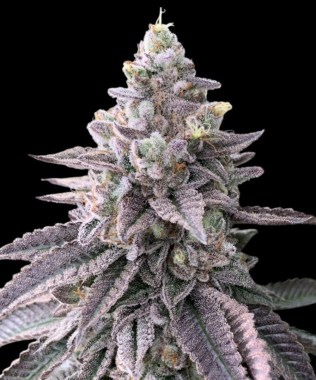
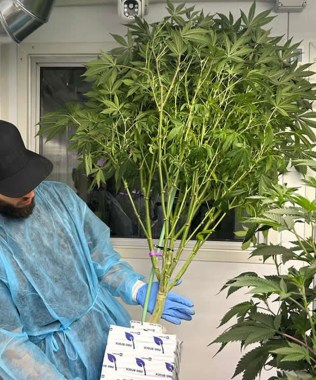
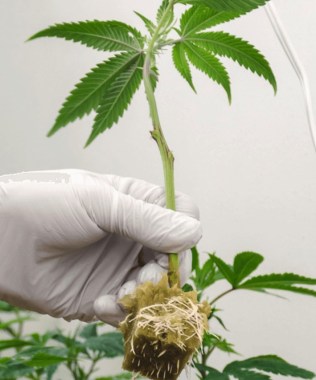
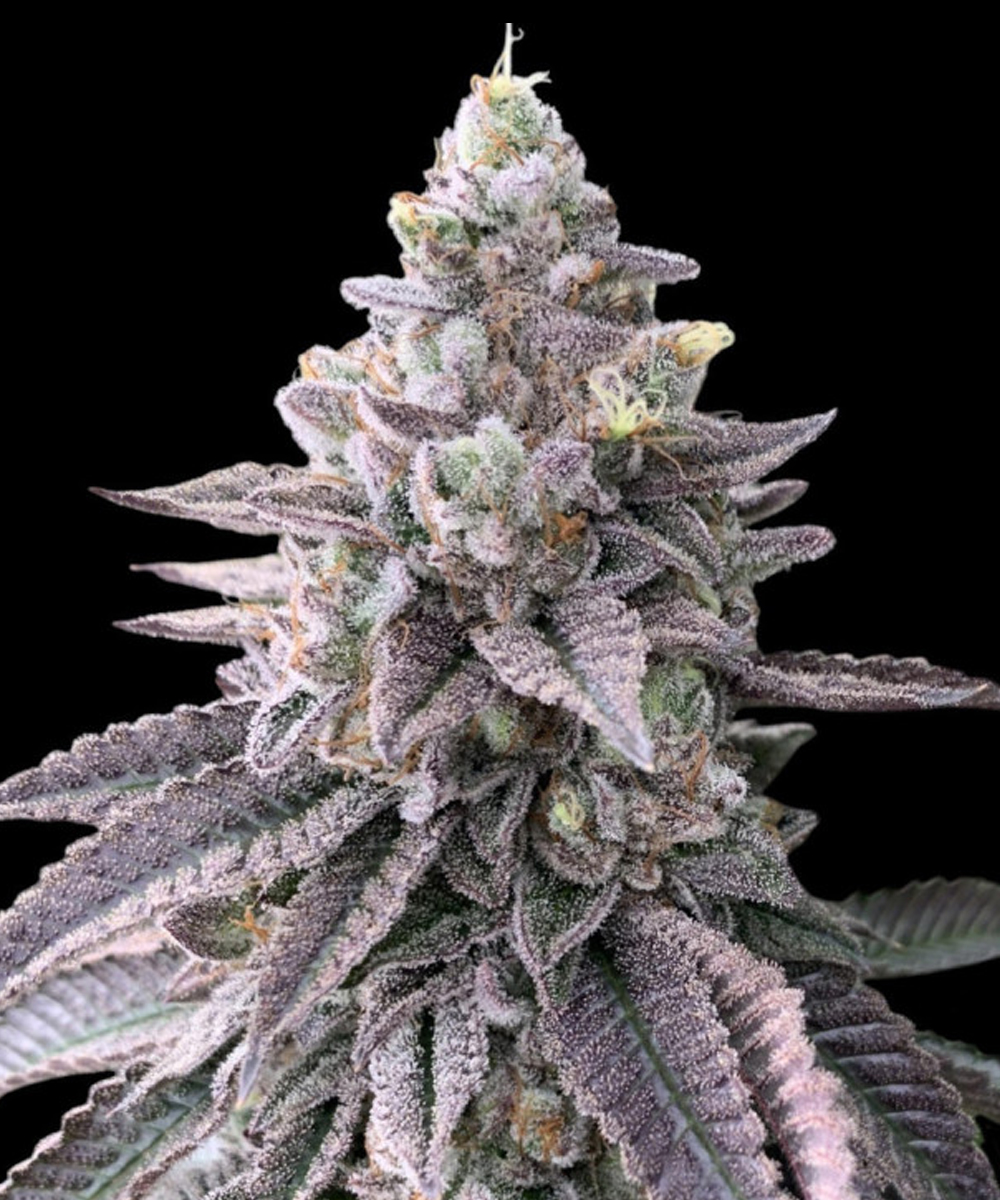
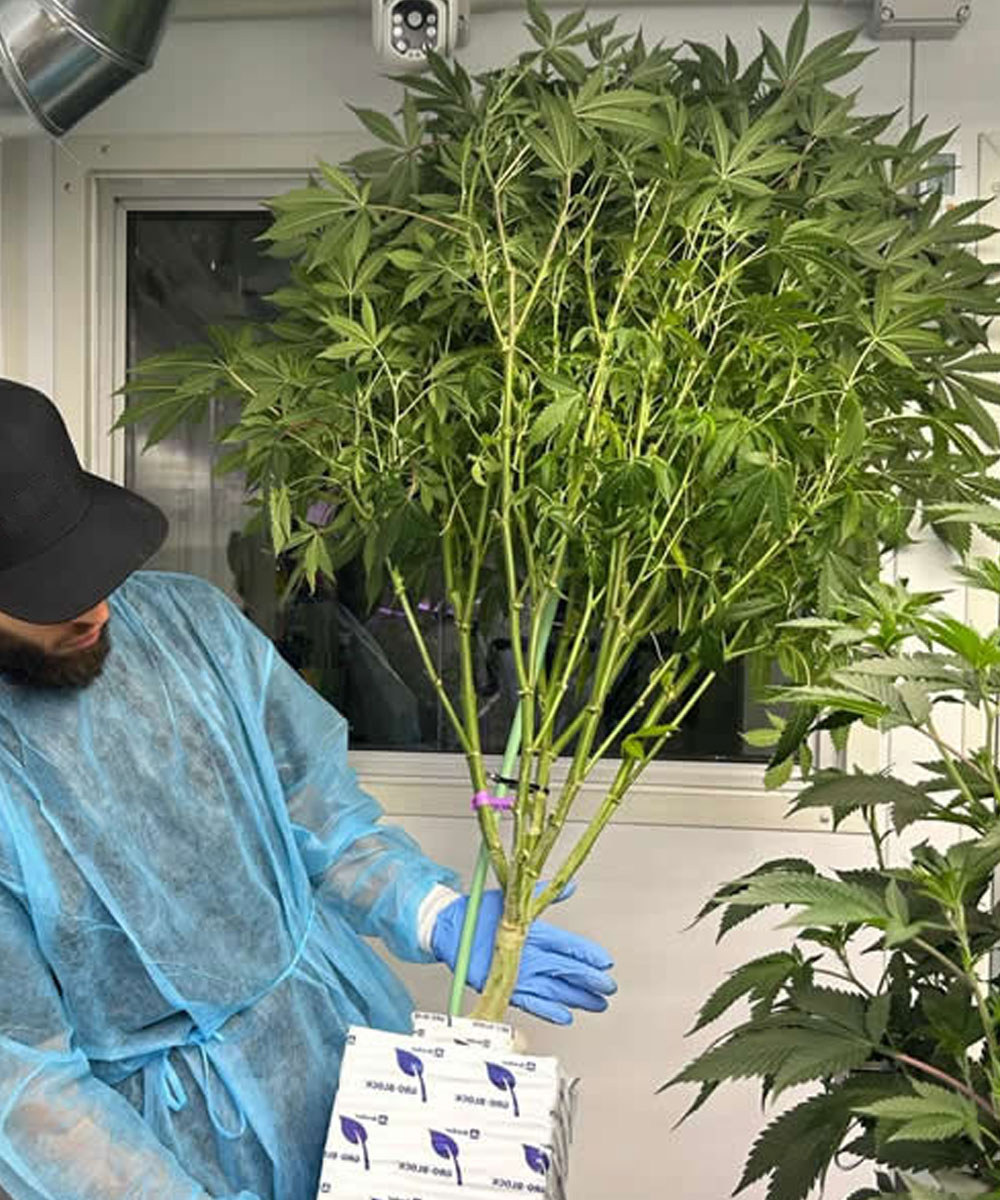
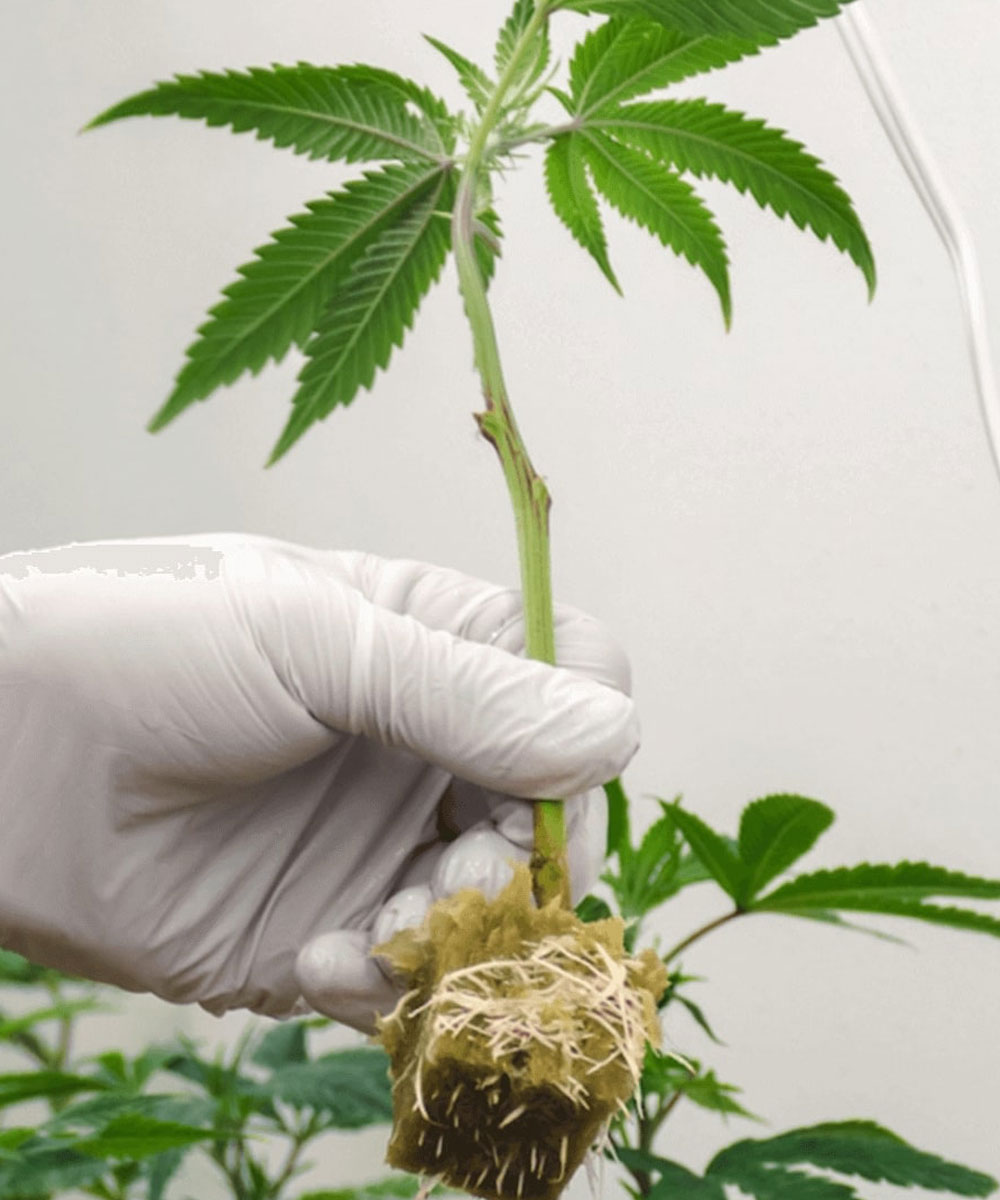
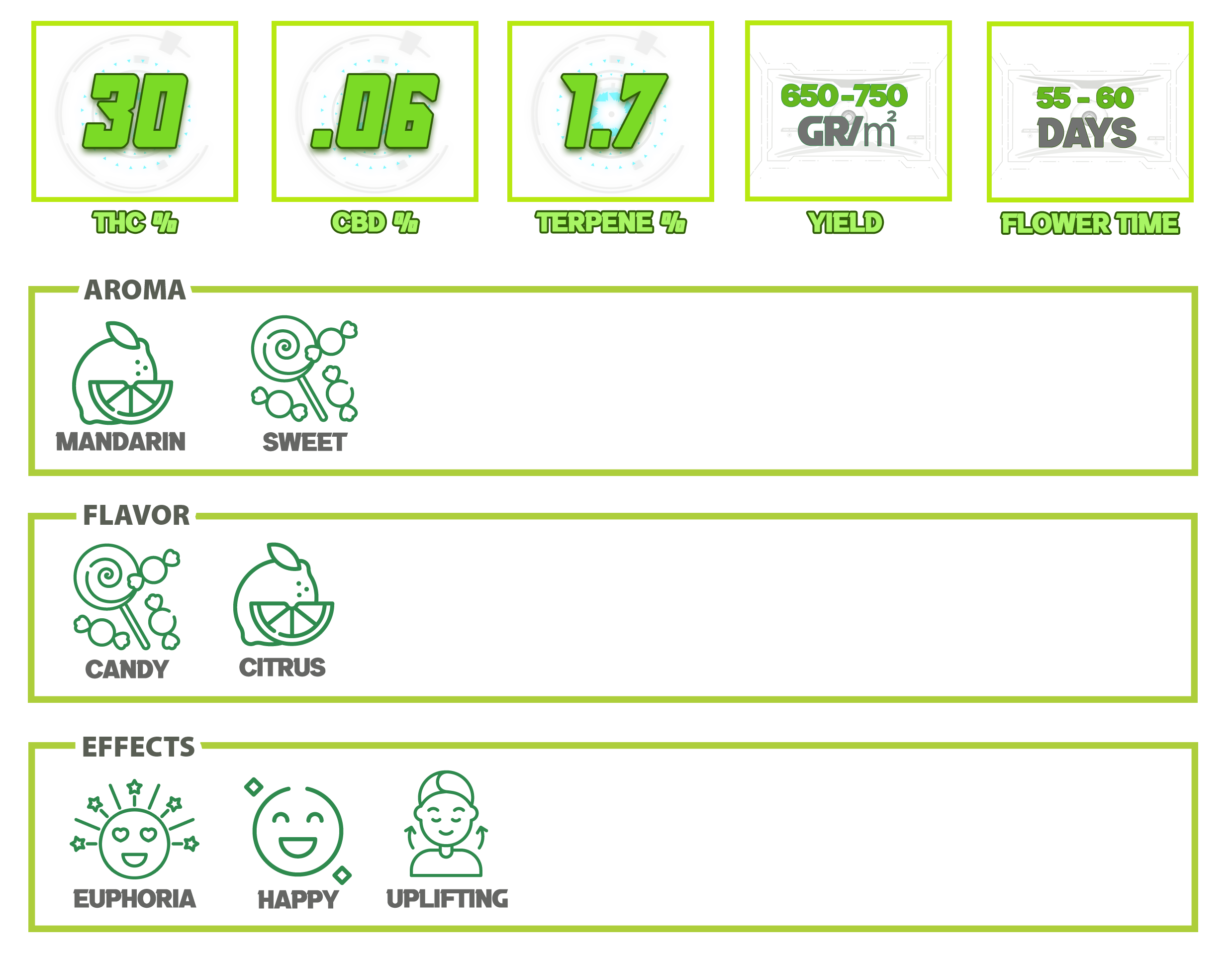
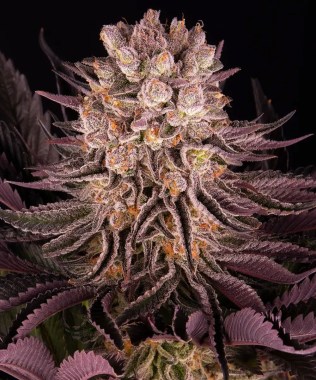
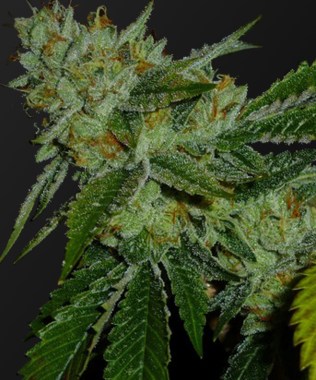
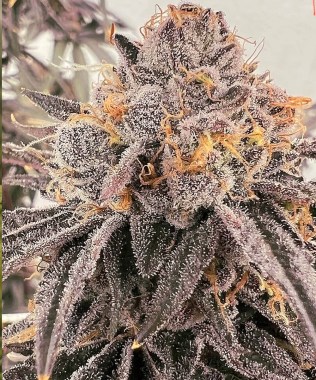

 German
German
 Italian
Italian
 Russian
Russian
 English
English